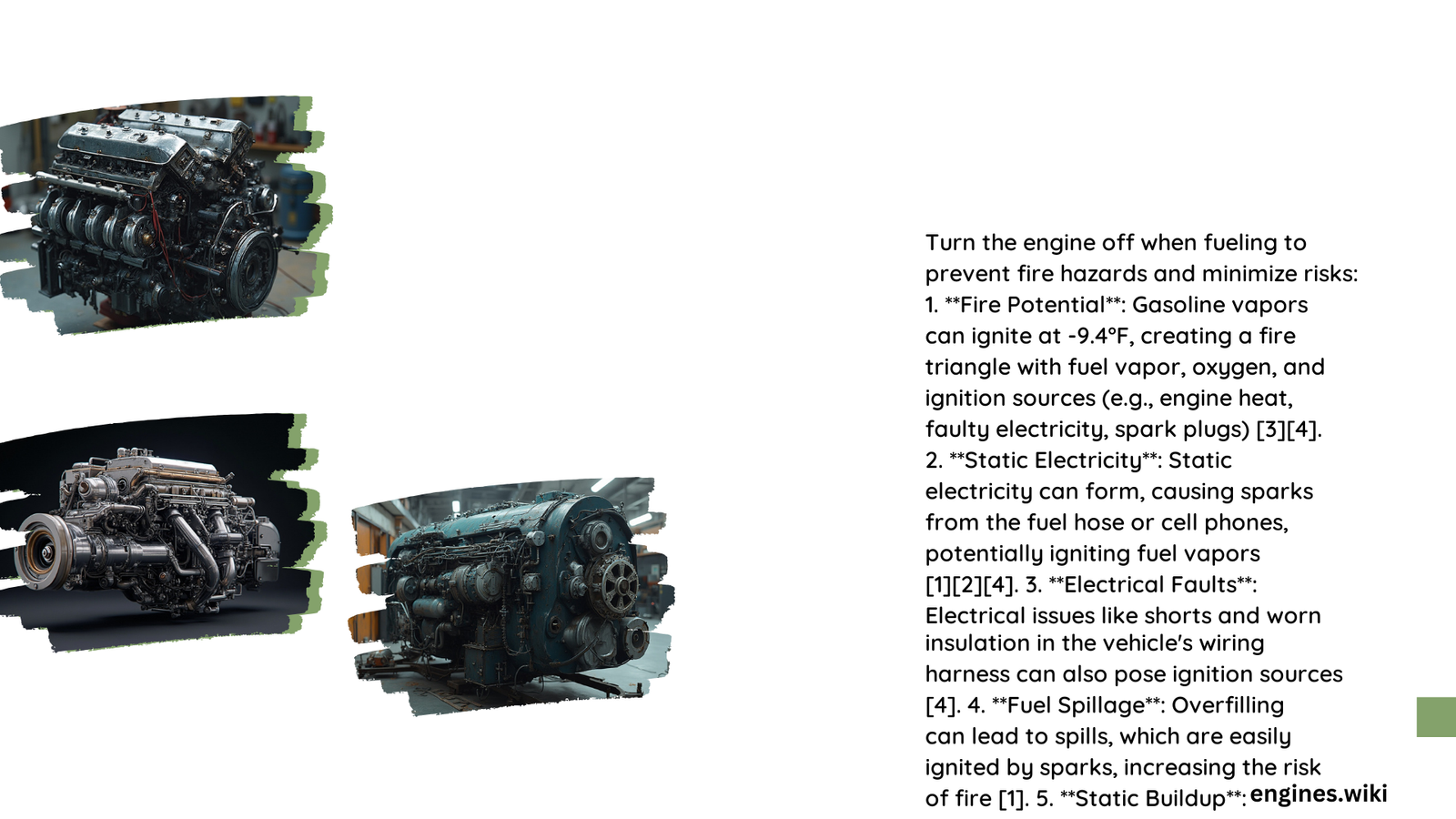Fueling a vehicle requires careful attention to safety protocols. Turning off the engine during refueling is a critical practice that prevents potential fire hazards, reduces static electricity risks, and ensures the safety of both the driver and surrounding environment. Understanding the scientific and practical reasons behind this simple yet essential action can protect lives and prevent catastrophic incidents at fuel stations.
What Are the Primary Fire Risks During Fueling?
Fuel stations represent complex environments where multiple hazardous elements converge. The primary fire risks during fueling include:
- Heat Generation
- Running engines produce significant heat
- Engine components can reach temperatures exceeding 200°F
-
Fuel vapors are highly combustible at specific temperature ranges
-
Electrical Spark Potential
- Operational engines generate electrical sparks
- Spark plugs and electrical systems create potential ignition sources
- Even minor electrical discharges can trigger fuel vapor combustion
Static Electricity: The Invisible Threat
| Risk Factor | Potential Consequence | Mitigation Strategy |
|---|---|---|
| Re-entering Vehicle | Static Electricity Buildup | Discharge Static Before Touching Nozzle |
| Synthetic Clothing | Increased Charge Accumulation | Touch Metal Surface Before Fueling |
| Dry Weather Conditions | Higher Static Electricity Potential | Maintain Physical Contact with Vehicle |
Why Does Static Electricity Matter During Refueling?

Static electricity represents a significant yet often overlooked danger during fuel station visits. The Petroleum Equipment Institute documented fascinating insights:
- Approximately 50% of gas station fires occur due to static electricity
- Women wearing rubber-soled shoes are statistically more prone to static discharge incidents
- Cool, dry environments exponentially increase static electricity risks
Practical Safety Recommendations
Drivers should follow these critical guidelines:
- Complete Engine Shutdown
- Turn off vehicle before approaching fuel pump
- Ensure transmission is in park
-
Engage parking brake
-
Personal Safety Protocols
- Avoid re-entering vehicle during fueling
- Discharge static electricity by touching metal vehicle surface
- Remove electronic devices from immediate vicinity
What Technical Factors Increase Fire Risks?
Several technical factors contribute to potential fire hazards during fueling:
- Fuel vapor concentration
- Oxygen availability
- Potential ignition sources
- Environmental temperature
- Vehicle electrical system condition
Scientific Perspective on Fuel Vapor Combustion
Fuel vapors create a volatile mixture that requires minimal energy for ignition. The “fire triangle” consists of:
– Fuel (vapor)
– Oxygen
– Ignition source
Eliminating any component prevents potential combustion.
How Can Drivers Minimize Refueling Risks?
Comprehensive safety involves:
– Consistent engine shutdown
– Avoiding distractions
– Understanding basic fuel station safety principles
– Maintaining vehicle electrical systems
– Wearing appropriate clothing
Expert Recommendations
Automotive safety experts unanimously agree: turning off the engine during fueling is a non-negotiable safety practice that requires minimal effort but prevents potentially catastrophic consequences.
Conclusion
Understanding why turning the engine off when fueling is crucial can save lives. By implementing simple safety protocols, drivers protect themselves, their vehicles, and surrounding environments from potential fire hazards.
